Several website redesigns ago, I used to have mini-portfolios of various subjects on my website. They were primarily for art buyers for hospitals, offices, and similar markets. I’d have a short statement about the meaning of the subject to me, and then a few interesting quotes from some of my favorite authors. It was good exercise for me to divide out the various subjects that I photograph, give them personal meaning, find how they relate to my love of books, and then pull it together with a selection of up to twelve images. It didn’t get used by art buyers, so I converted them into blog posts during a website redesign. I think it was a worthy exercise, and one that you may consider. This essay will be about how I did mine. I’m going to use my The Canoe mini-portfolio as an example.
First a shameless self promo: My November Online Lightroom Class is open for registration. I’ve also added by the hour Online Image Reviews. The latter I’m doing as a trial by a request of a workshop participant. I’m only offering a few sessions to see how I like them and how well they work for participants. If interested, reach out to me from my website. Shameless self promo over.
It was a great exercise in looking critically at my work and decided what I thought would be best from each subject for someone to buy. I think it was much more an exercise for me than for anything else. I’ve been considering remaking them on my website but including them in my online print store instead as a separate element of the website.
Here was the opening from The Canoe:
My first strong memory of a canoe was paddling a beat-up, old, fiberglass canoe on the backwaters of the Mississippi River. Many adventures ensued. Kirk Wipper, the founder of the Canadian Canoe Museum, captured what a canoe means to me when he said, “You have to do what you can, do your best with what you are. And you have to believe in wilderness. If you do that you can’t go wrong.”
After the introduction I’d post a few photos, such as these. On websites, it’s much easier to create tiled grids for photos so that they nest together than it is on Substack or in Photoshop or Lightroom. Instead of including six, which would make it look bad on Substack, I’ll include three.
Then I’d add one or two more paragraphs about its meaning to me or something historical about the location or subject if that was applicable. For the web if you are interesting in getting search traffic, you’d likely want at least 350 words to tell the search engines what your mini-portfolio was about. In that case, you may need to include more.
The goal of the extra paragraphs was to make the post something more than just photos and to give it a personal touch and literary vignette. Depending on your understanding of story, you might say give it a story. The complex part of storytelling is that stories need to have a conflict and resolution, but a vignette only needs to capture a brief moment in time and is usually descriptive. That was my aim.
The Canoe didn’t have a second paragraph, but if I had wanted to add one, I might have written about where modern canoes came from, i.e. they originated from birchbark canoes of the aboriginal North American continent where they were used as transportation and as a work vehicle and morphed into recreational equipment during the late 1800s and early 1900s. Leading up to today’s Kevlar and carbonfiber canoes. Or something like that. It would need to be much more descriptive and there would need to be photos that illustrated the history. For example, a photo of a birchbark canoe and a wood and canvas canoe.
Another approach to the second paragraph would be if the subject had multiple aspects. For example, I did one one Sanibel Island. The second or third paragraphed introduced my love of finding driftwood on the white sand beaches. Then I included a group of photos showing that driftwood.
With The Canoe, my second paragraph was a quote followed by six more images.
It was a simple exercise. Because art buyers weren’t using them, I decided to end the extra work. I do miss them. I also think that as an exercise it can help improve your photography without experiencing much pressure. If you’re looking for six to 12 images instead of 20, it feels much easier. You just find what you think are your best six images from that subject. Then you write about them.
The act of selecting a mini-portfolio forces you to choose your best images for the subject, and it can give you clarity about your work. It can also give you clues about where to focus your work. If you really like what you’ve selected, go out and take more photos of that subject using those same techniques.
The structure of a mini-portfolio might look like this:
Opening paragraph about what this subject means to you or why you photographed it or both.
The first half of the images.
A quote or little nugget of fun to help illustrate its importance to you or a second paragraph.
The second half of the images.
A concluding quote or brief statement.
In print, you could print the opening paragraph centered on a fancy piece of paper, then include three printed photos. Then a fancy piece of paper with the second paragraph or quote. Then the next three images. Last, a fancy piece of paper with a final statement plus your contact info or just your contact info. I may consider my contact info on the first page. Maybe a short bio on the last. There are boxes available to hold mini-portfolios such as these.
The physical print idea might be a fun project for a photo club.
Whether you decide to go digital and post it on social media or make this a print project, I encourage you to give it a try. It’s a great rainy day project or one for when you are looking for inspiration.
Until next time
Thanks again for reading my essay, and I’ll see you again in two weeks. Until then here’s a parting shot of me in a canoe. This is an old one from 2018, but because I’m always the photographer I seldom have photos of myself on the water.



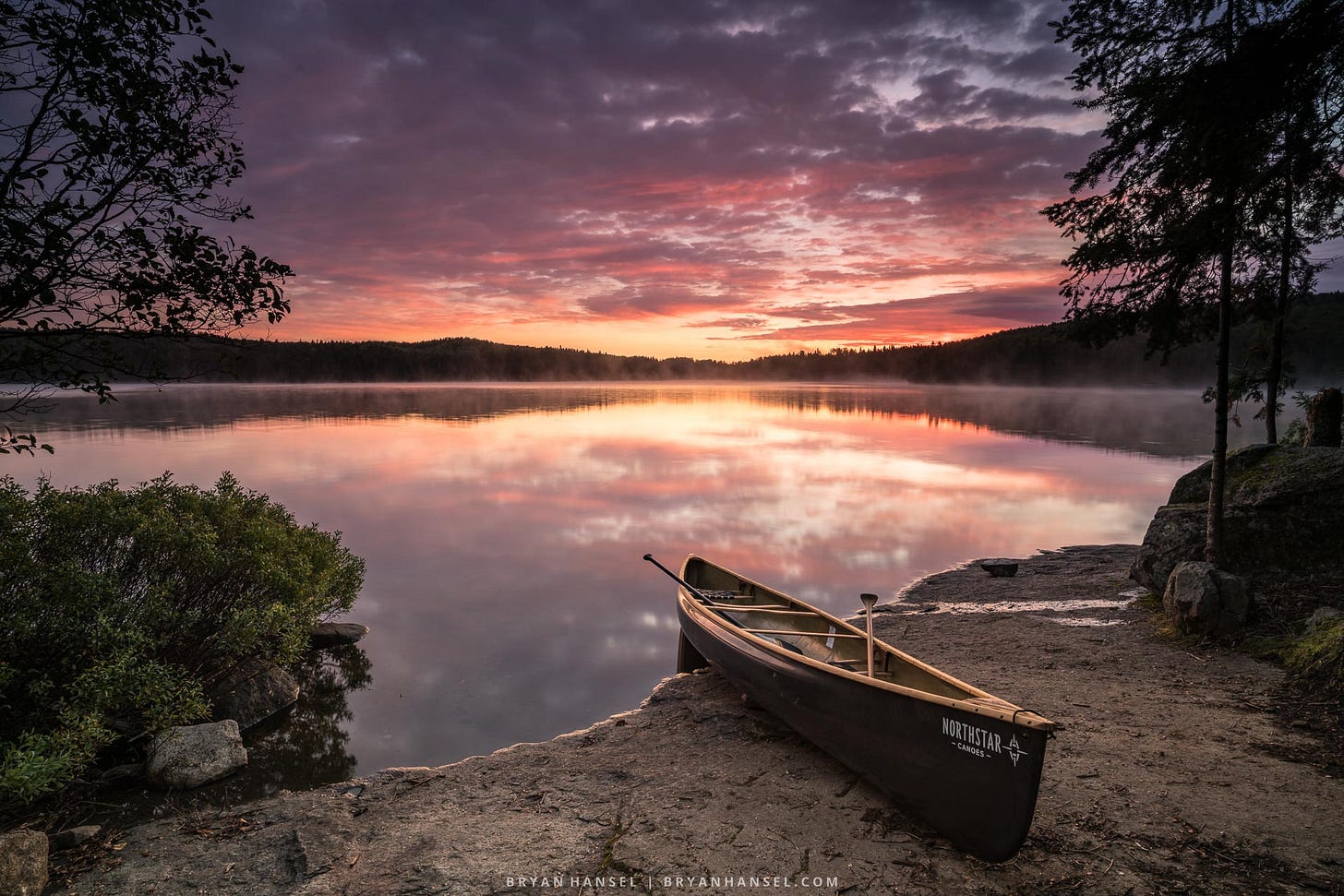
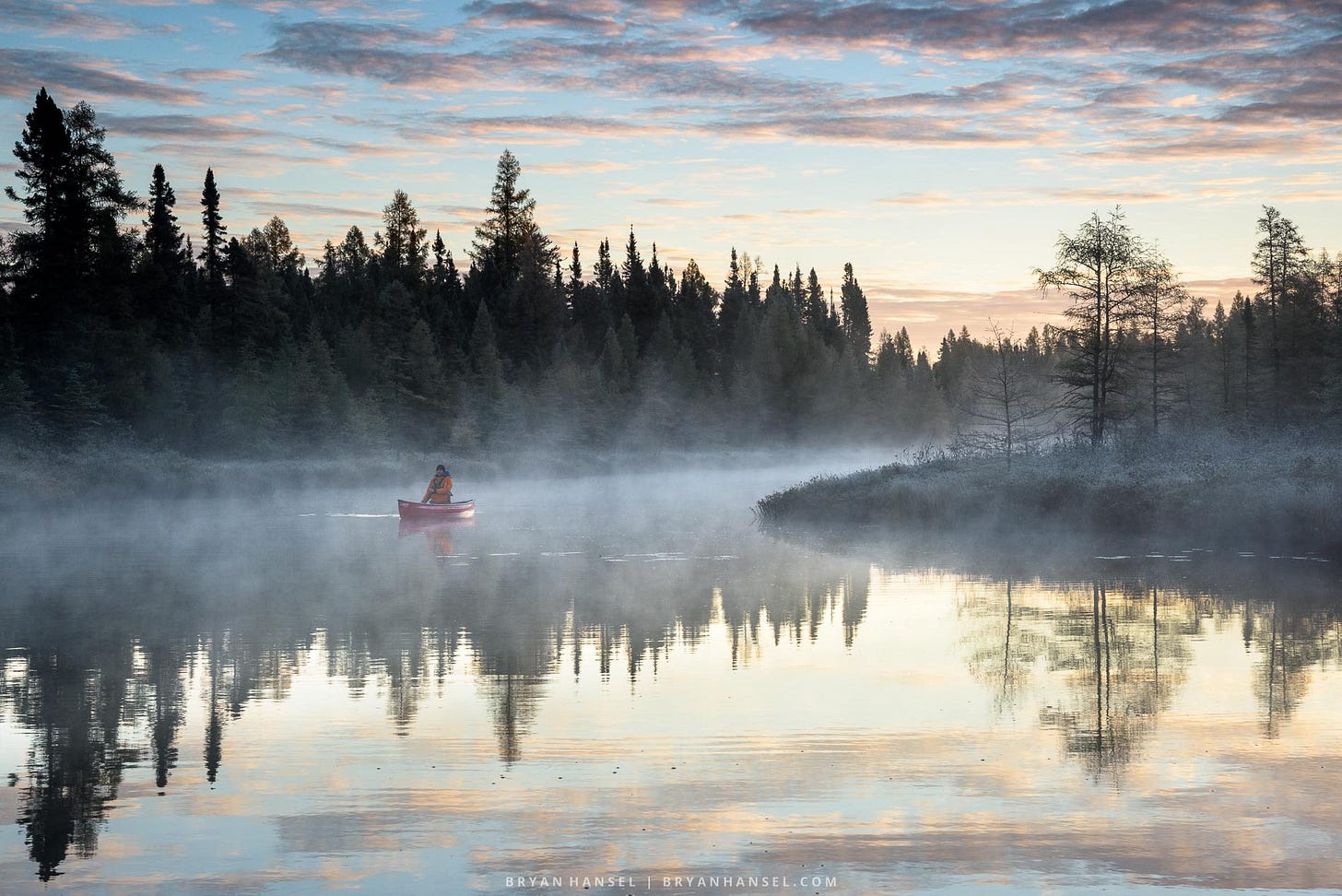

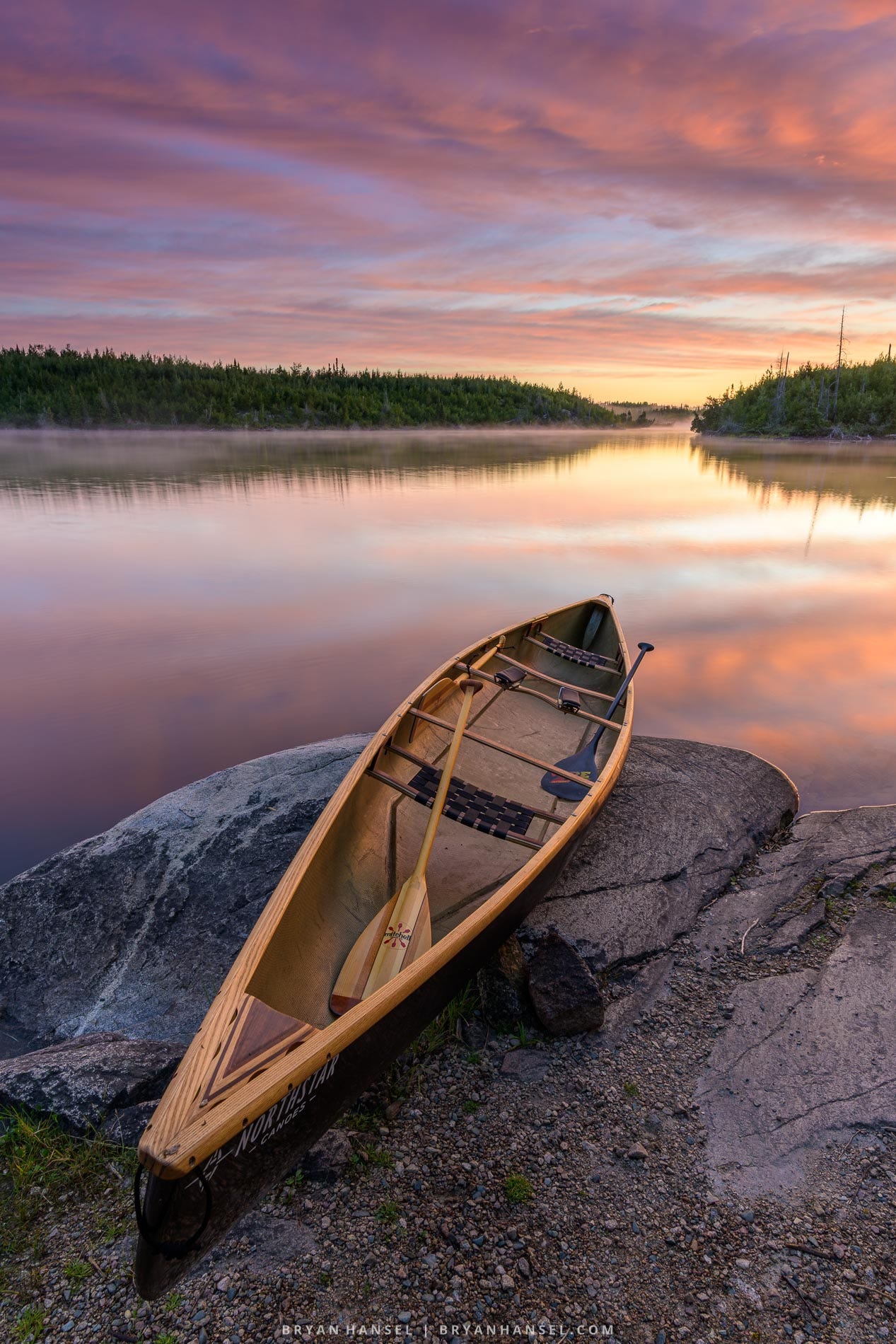
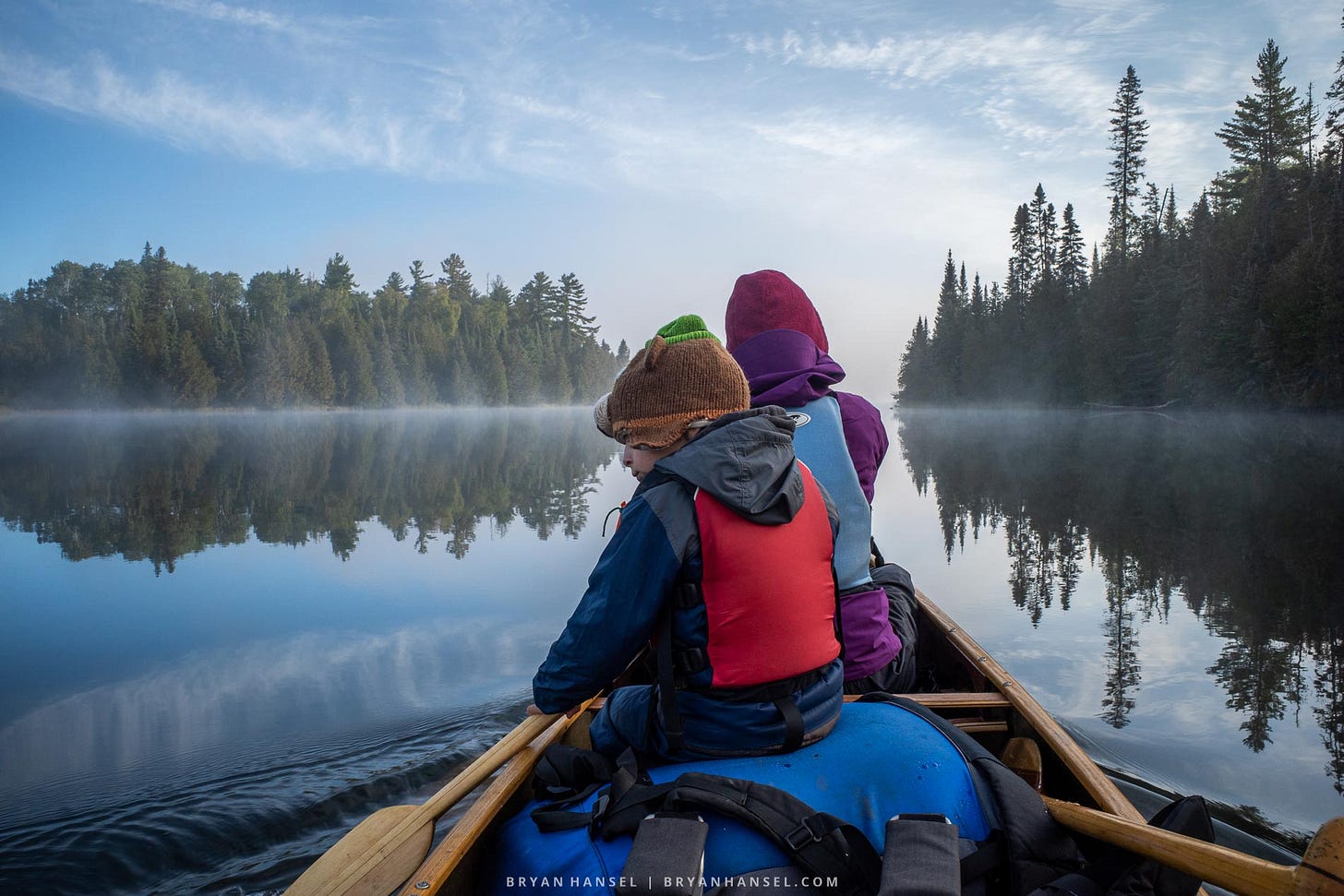
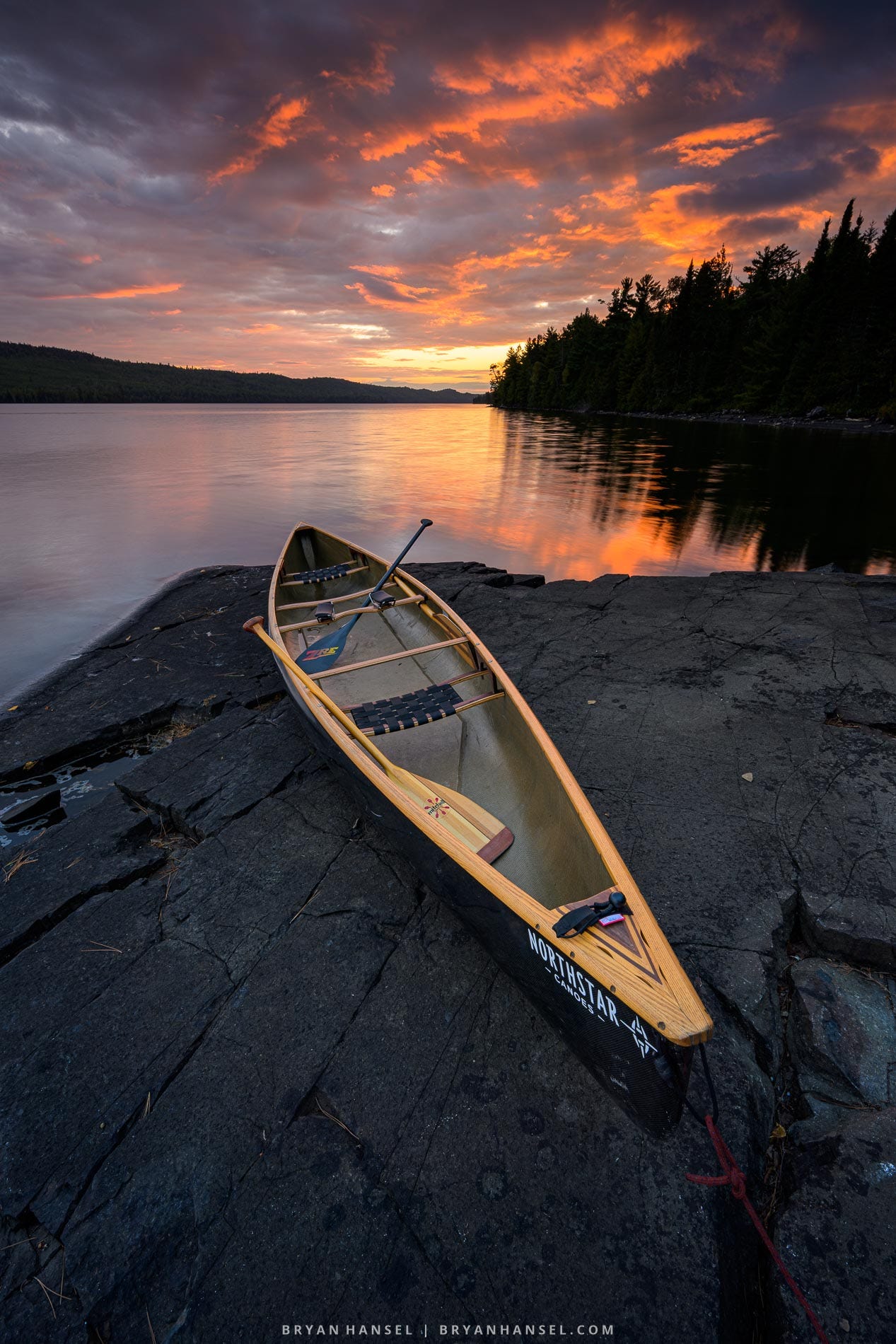
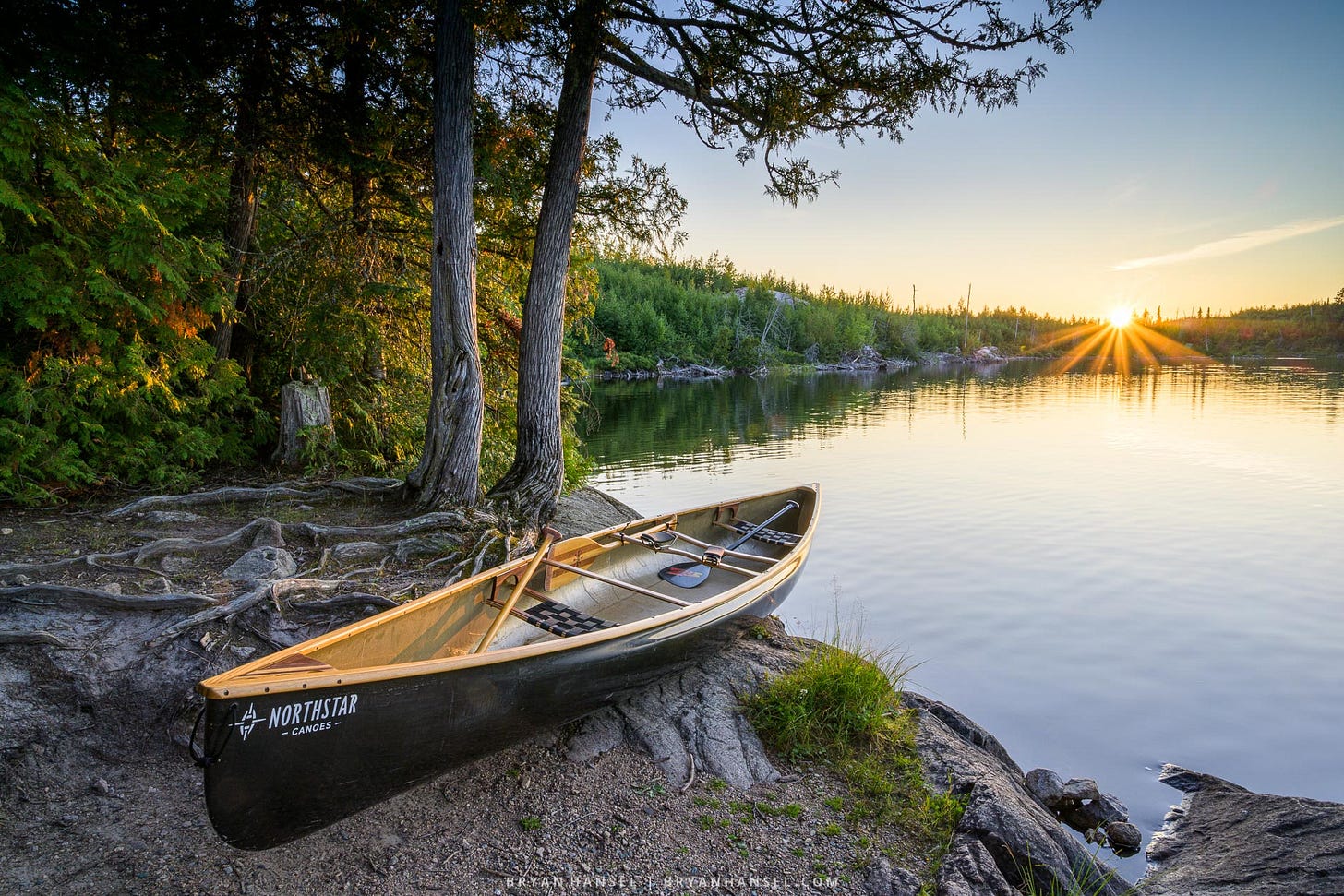
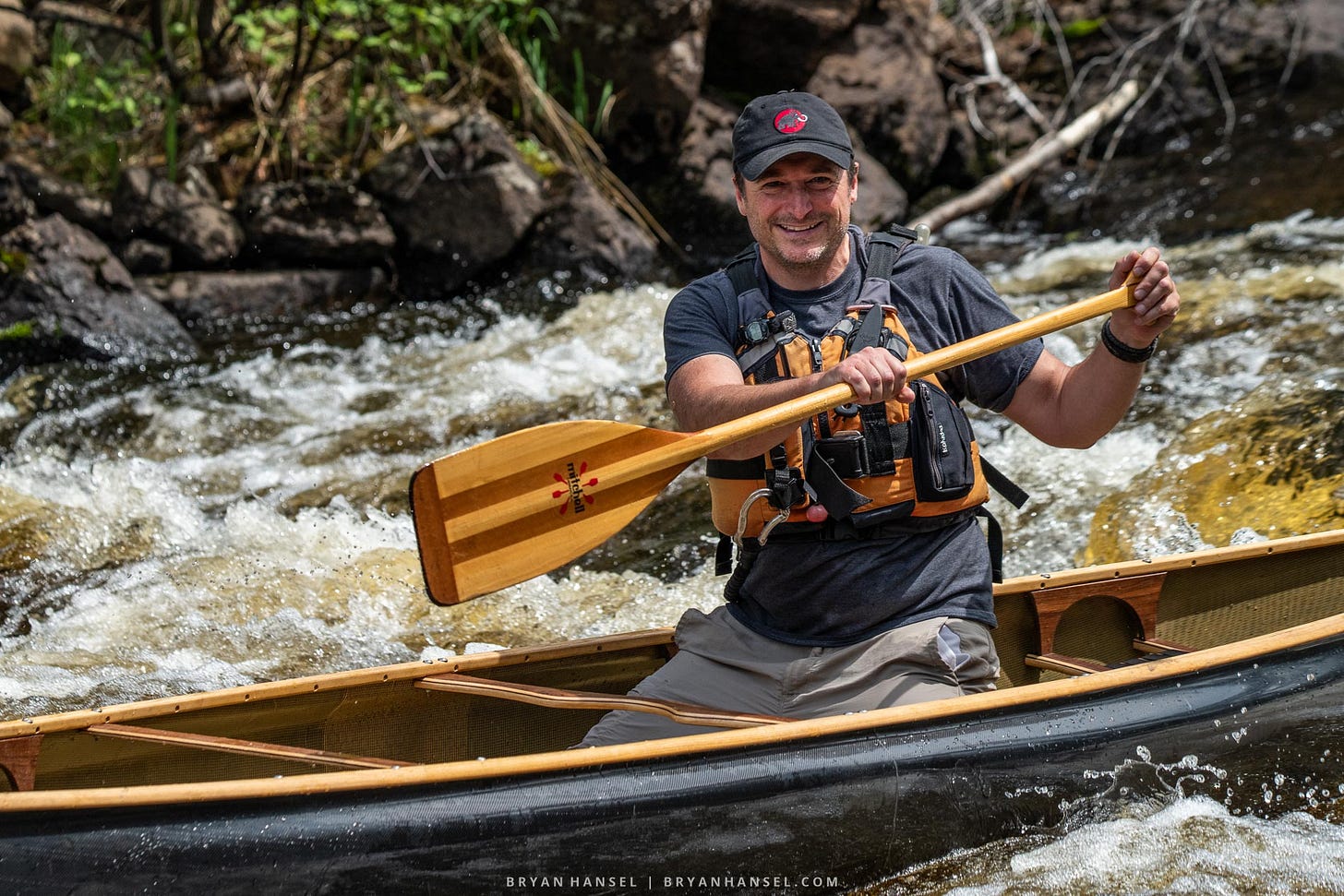
I miss my canoe!!! You have some excellent canoe photos that reminds me of many canoe adventures....
Nice article. I love the pics. It brought back memories of several canoe trips I did with my dad in Canada.